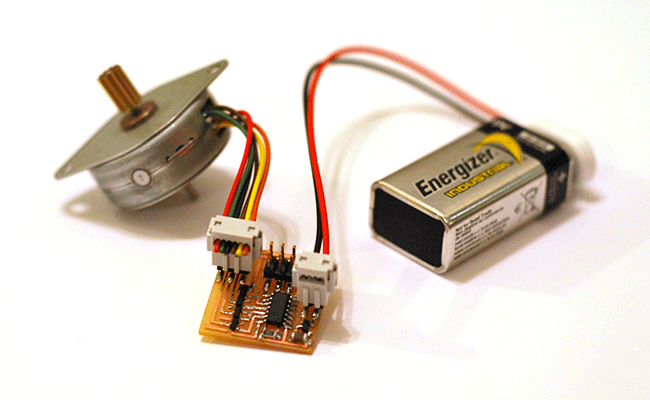
- Arduino stepper motor direction rotary encoder serial#
- Arduino stepper motor direction rotary encoder drivers#
- Arduino stepper motor direction rotary encoder driver#
A variable called stepsPerRevolution is also defined. The sketch begins by defining the Arduino pins to which the A4988’s STEP and DIR pins are connected. Spin motor quickly for( int x = 0 x < stepsPerRevolution x++) Spin motor slowly for( int x = 0 x < stepsPerRevolution x++)ĭelay( 1000) // Wait a second // Set motor direction counterclockwise digitalWrite(dirPin, LOW)

Set motor direction clockwise digitalWrite(dirPin, HIGH) Declare pins as Outputs pinMode(stepPin, OUTPUT) Serial.// Define pin connections & motor's steps per revolution const int dirPin = 2 PinMode(pinB, INPUT_PULLUP) // set pinB as an input, pulled HIGH to the logic voltage (5V or 3.3V for most cases)ĪttachInterrupt(0,PinA,RISING) // set an interrupt on PinA, looking for a rising edge signal and executing the "PinA" Interrupt Service Routine (below)ĪttachInterrupt(1,PinB,RISING) // set an interrupt on PinB, looking for a rising edge signal and executing the "PinB" Interrupt Service Routine (below) PinMode(pinA, INPUT_PULLUP) // set pinA as an input, pulled HIGH to the logic voltage (5V or 3.3V for most cases) Volatile bool encoderDir = CW // stores the direction of rotation clockwise = 0 or counter-clockwise = 1
Arduino stepper motor direction rotary encoder serial#
Volatile int encoderPosOld = 0 //stores the last encoder position value so we can compare to the current reading and see if it has changed (so we know when to print to the serial monitor) Change to int or uin16_t instead of byte if you want to record a larger range than 0-255 Volatile long encoderPos = 0 //this variable stores our current value of encoder position. Volatile byte reading = 0 //somewhere to store the direct values we read from our interrupt pins before checking to see if we have moved a whole detent

Volatile byte bFlag = 0 // let's us know when we're expecting a rising edge on pinB to signal that the encoder has arrived at a detent (opposite direction to when aFlag is set) Volatile byte aFlag = 0 // let's us know when we're expecting a rising edge on pinA to signal that the encoder has arrived at a detent #define SLEEP 12 // Pin 12 connected to SLEEP pin
Arduino stepper motor direction rotary encoder driver#
Thanks in advance /*******Interrupt-based Rotary Encoder Sketch*******īy Simon Merrett, based on insight from Oleg Mazurov, Nick Gammon, rt, Steve SpenceĬonst int pinA = 2 // Our first hardware interrupt pin is digital pin 2Ĭonst int pinB = 3 // Our second hardware interrupt pin is digital pin 3Ĭonst int stepPin = 10 // pin for pulsing a step to the stepper driverĬonst int dirPin = 9 // pin for setting stepper driver directionĬonst bool CW = 0 // clockwise rotation direction (viewed from encoder body out toward shaft-like CNC Machines)Ĭonst bool CCW = 1 // counter-clockwise rotation direction (see above, these directions appear reverse when viewed from shaft side) Is there a simple way to change the script to ignore a given number of pulses from the 600 PPR ROE, to effectively make it a 50 or 100 PPR roe? This is less expensive than buying newer encoders for the project. I could even use speeds slower than 1/256. The 600 PPR steppers move the steppers too fast unless I'm microstepping 1/8 or slower. This driver allows full-step, half-step, 1/4-step, 1/8-step, 1/16-step, 1/32-step, 1/128-step, and 1/256-step.Įverything works fine, except I wish I used 50 or 100 PPR encoders.
Arduino stepper motor direction rotary encoder drivers#
The project is using STSPIN820 drivers from pololu.

I have a project where i've used code based on the sketch below to move stepper motors with 600 PPR optical encoders. My first post, so my apologies if i done something incorrectly (I did read the sticky)


 0 kommentar(er)
0 kommentar(er)
